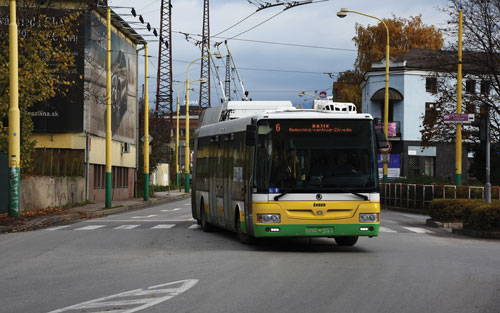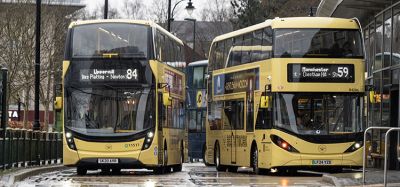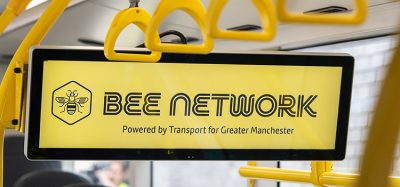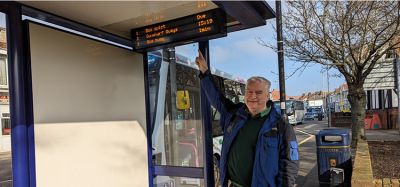Eastern Europe: Žilina, Slovakia – Information, information, information
- Like
- Digg
- Del
- Tumblr
- VKontakte
- Buffer
- Love This
- Odnoklassniki
- Meneame
- Blogger
- Amazon
- Yahoo Mail
- Gmail
- AOL
- Newsvine
- HackerNews
- Evernote
- MySpace
- Mail.ru
- Viadeo
- Line
- Comments
- Yummly
- SMS
- Viber
- Telegram
- Subscribe
- Skype
- Facebook Messenger
- Kakao
- LiveJournal
- Yammer
- Edgar
- Fintel
- Mix
- Instapaper
- Copy Link
Posted: 17 December 2015 | Jan Šimko, Director of Transport, Dopravný podnik mesta Žiliny s.r.o. (DPMŽ) | No comments yet
Providing urban transport in the Slovakian town of Žilina and its surroundings is Dopravný podnik mesta Žiliny s.r.o. (DPMŽ). With its history dating back to 1949, the transport enterprise continues to grow and with future funding in the pipeline, Jan Šimko, Director of Transport, explores the importance of offering real-time information for passengers and expanding its trolleybus and bus routes…


The history of DPMŽ
Back in 1949, there was social demand to provide urban transport and municipal services in Žilina, and by the end of that year, the first line was established, yet passengers were still being transported by old buses from Prague, powered by gasoline, not diesel. In 1963, a government decision caused DPMŽ to become integrated into a state company. This was finalised in 1993, and the decision to develop trolleybus transportation was also made. A trolleybus network, substations and a trolleybus depot were built, and the first trolleybus ride occurred in November 1994. This trolleybus network has continued to expand, with the last stage put into service in July 2004.
The growth of DPMŽ Today, DPMŽ has 257 employees, operates eight trolleybuses and 11 bus routes with 239 bus stops. Another two bus routes are dedicated to employees of KIA motors Slovakia, MOBIS Slovakia and several other companies which cooperate with this Korean car producer.
The rolling stock of DPMŽ includes 41 trolleybuses and 42 buses. The majority of our trolleybuses are different models of ŠKODA trolleybuses, whereas our buses are mainly supplied by Karosa and its successor Iveco. However, in 2014 a new type of bus was purchased from the Polish producer, SOLARIS Urbino.
The total length of transportation routes is 391.9km and the annual amount of vehicle kilometres is 3.55 million. Žilina’s public transport serves more than 38,000 passengers daily. The trolleybus network was built with the intention of making trolleybus transport the backbone of public transport in Žilina, and after the completion of the last stage of construction in 2004, this idea was fulfilled. Today, more than 70% of all passengers travel by trolleybus lines, due to the fact that the trolleybus network connects together key areas, such as all estate housing, hospitals, the university campus and other centres of education.
Implementation of on-board information and real-time technology
In 1996, DPMŽ set the goal of installing a monitoring system, with the aid of on-board information technology. This was with the intention of providing the operator with information, but also to deliver reliable and accurate information to passengers. This was one of the first public transport operator systems to be installed into all vehicles. An on-board computer, electronic information panels, electronic validators, passenger announcements and sensors were used in order to monitor technical and traffic data, whilst the vehicle was in operation. In 1999, contact smartcards were introduced but where replaced in 2003 with contactless smartcards. This changed helped to increase the reliability and efficiency of the ticketing system. Today, more than 25,000 active cards are being used each year.
On-board information systems, based on monitoring operations, and technical and tariff parameters is the basis for effective and efficient running vehicles in public transport. Analysis of data such as passenger counting, time of departure from each bus stop and journey speed enables the preparation of an effective timetable graphic and the evaluation of the punctuality of journeys. Having an on-board information system has opened up the possibility of providing real-time information, not only for transport managing to dispatchers, but for passengers in the form of a visual information timetable at the bus stop. At present, this service is available for passengers using the trolleybus lines on the main bus stops in the city centre. Since 2006, this real-time information has been transmitted over the MOTOROLA trunking radio network, from the vehicle to the traffic control system and then via GPRS network into the bus stop information panels. Passengers are able to see when the vehicle will arrive and if there is traffic or operational problems, a message from the dispatchers can be shown. Timetables at the bus stops are equipped with QR codes and there is also a timetable mobile application (iOS, Android and Windows mobile) which passengers can download for free. The timetable of Žilina’s public transport is searchable even on Google maps, a first for a town in Slovakia.
The prioritisation of public transport
In the next six years, DPMŽ has the possibility of using EU funds for further development. The Slovak republic and the European Commission have negotiated two operational programmes which will be dedicated to supporting public transport. DPMŽ has actively cooperated in the preparation of the 2020 Strategy of development, by making proposals of different projects which would improve public transport in Žilina’s region and make this service more reputable in the eyes of the passengers. The first step will be to prioritise a public transport vehicle on the traffic light intersection and ensure a faster intersection crossing. The spatial conditions of the road network in Žilina make it impossible to build a dedicated bus line. For this reason, the prioritisation of the traffic light intersection is perhaps the only way to battle with privately owned cars. In September and October, DPMŽ tested this type of prioritisation by applying it to two intersections, and four vehicles on four routes.
The radio communication network was created by TAIT radio during this period, between the vehicles and traffic light control units of these two intersections. Managing this system of the intersection allows active communication with the on-board computer, which then provides the driver with the relevant instructions of when they should start to move from the bus stop so that they can cross the intersection without stopping. This proposed system shortened travel times and we believe that this system will be primarily advantageous for passengers. Travel time is one of the key factors when deciding which mode of transport to use.
Technology and trolleybus development
Information, information, information. This word is one of the most important and most used in the vocabulary of passengers and public transport operators. DPMŽ has realised this, and therefore we strive to support projects which aim to gain and provide real-time information for passengers. Our goal is to obtain real-time information from all vehicles on all routes and deliver them directly to each passenger’s mobile phone, make available on our web page and on the bus stop or to other vehicles. We would like to ensure that passengers will be able to plan their journey with real-time data, thus connection search results should reflect the real-time situation. For this kind of project we are also considering making our tariff system easier and providing modern ways of purchasing tickets. We would like to offer a mobile application for our customers, in which they will find all news, messages and warnings on important events from Žilina’s public transport and of course the timetable as well.
The renewal of trolleybus and bus rolling stock is another important project. Over the next two to three years, we want to use the financial support of the EU to purchase 27 trolleybuses; 18 articulated and seven standard. Trolleybus transportation is the backone of Žilina’s public transport, so it is therefore necessary to invest in this vehciles which will provide extra comfort during the journey, due to low-flooring, reliability, safeness, spaciousness and its modern interior design. Additionally, we would like to harness the advantage of combining trolleybuses with an APU battery, which will provide an operation on the route which connects Žilina’s main estate housing with the Žilina water dam. This area is a centre of recreation and relaxation and therefore we want to add to this environment by operating a zero emission vehicle. The renewal of the bus fleet involves 31 standard buses, and 50% of them we would like to purchase as a hybrid vehicle which will be low-floor, ecological and energy saving.
The future for DPMŽ
Another important project for us is the modernisation of the trolley track, as it will ensure faster and safer trolleybus journeys. Most of the sections of our track are in the old town and are more than 20 years old, thus need modernisation as old switches and crossings need replacing. We also need to develop our technology in our three substations, as currently we are unable to use the energy from brake recuperation.
For effective operation, the new trolleybuses need high quality maintenance in proper premises with the correct modern technology. Therefore, DPMŽ will use EU funds to build a new maintenance depot and other necessary technology systems. In spite of the wide trolleybus network in Žilina, we see another three areas where the sections could be built-up and where we could extend the network of ecological trolleybus transport.
By working together with the town of Žilina and Žilina’s self-governing region, we hope to build new transfer terminals and intelligent bus stops, which will be located in concentrated areas of public transport. Equally, we want to modernise platforms and bus stops, with the aim to ensure facilities are suitable for all people.
We believe that all these projects will help contribute to our effort of making the public transport in Žilina more attractive, reliable, fast and a more comfortable way of travelling. We hope that this will allow us to successfully compete against private cars, and at the same time, help to make the city of Žilina a great place to live.
Biography
Jan Šimko graduated from the Faculty of Operation and Economics of Transport and Communications on the Department of Road and Urban Transport in 1997, then immediately joined DPMŽ. Initially, he was responsible for the project of establishing and monitoring operations with the aid of on-board information technology. He became Managing Director of the Development Department in 2007, and in 2011 he became Director of Transport. Jan has participated in several EU projects, including BENEFIT, ADVANCE and IEE-Intelligent Energy Europe.
Related topics
Travel & Passenger Information
Issue
Issue 6 2015
Related modes
Bus & Coach
Related cities
Eastern Europe, Slovakia








